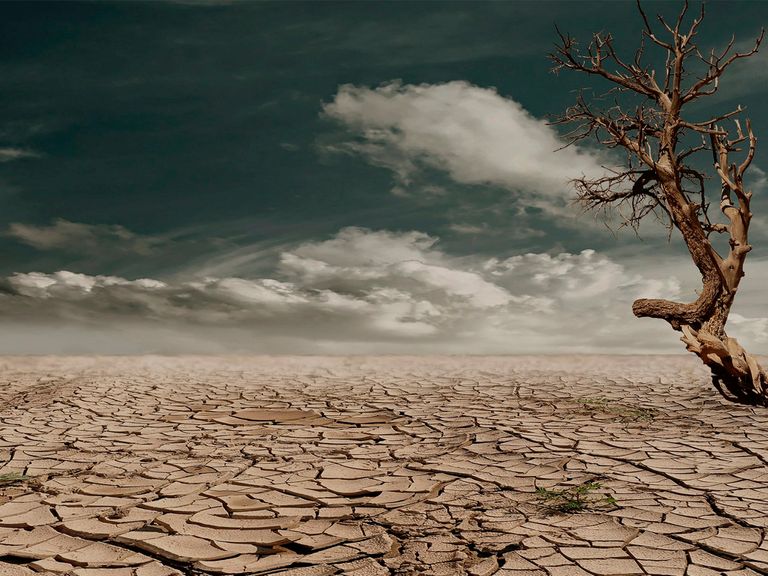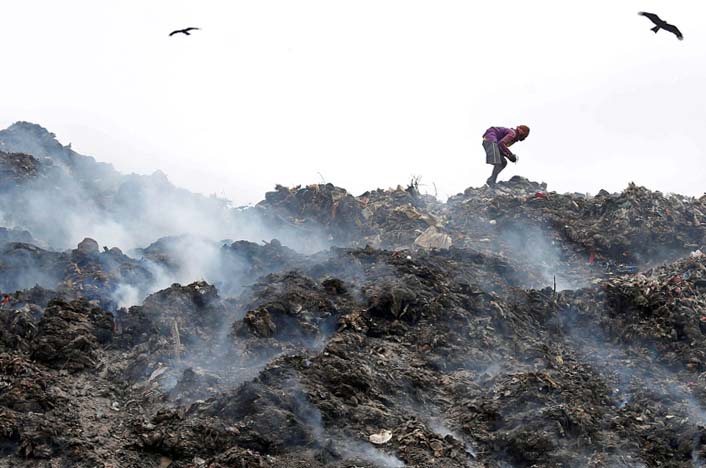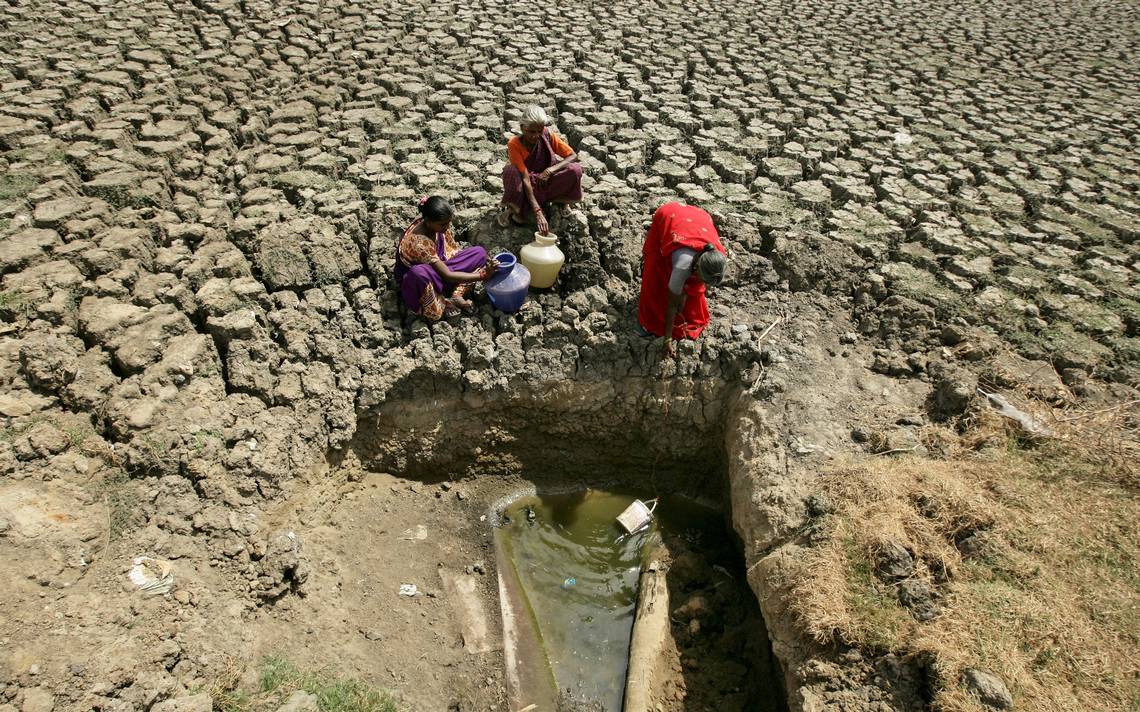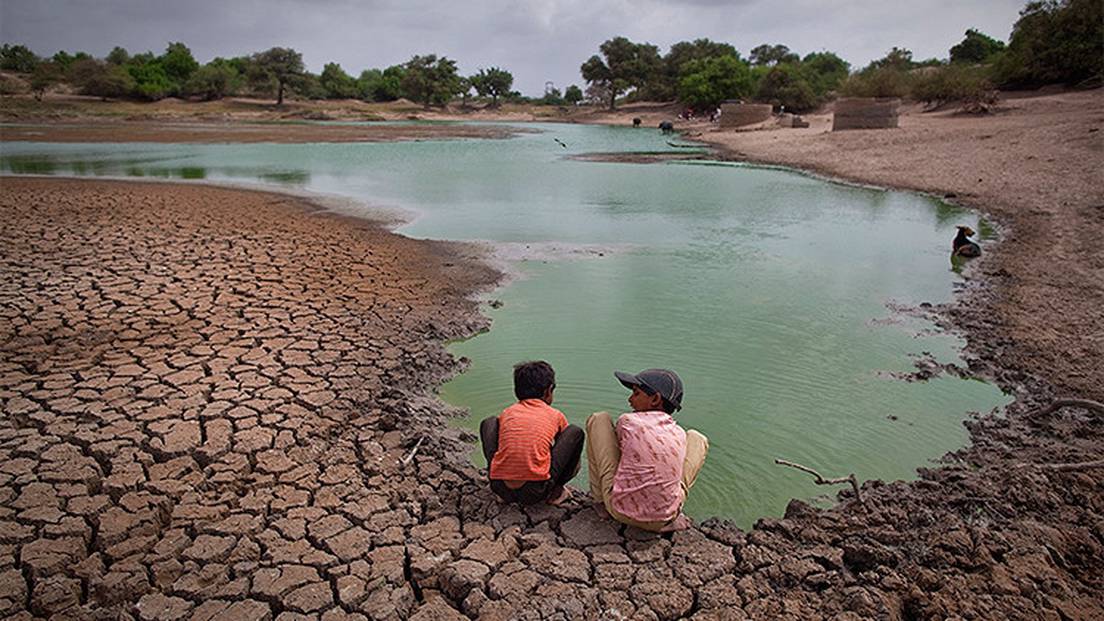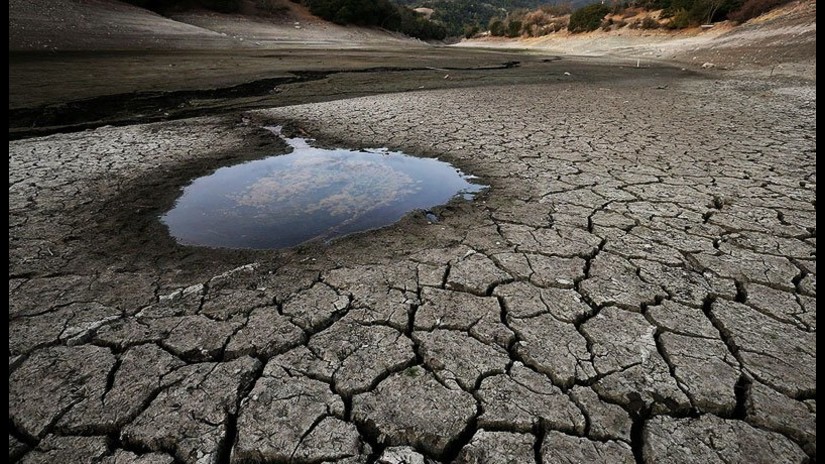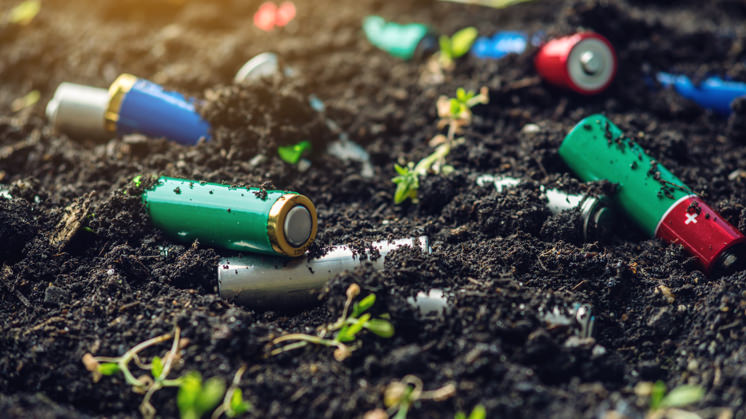As time passes, the importance of preserving the environment from pollution is revealed. Of which much has to be done to guarantee future generations that they can have an inheritance on our planet earth, highlighting mainly the contamination of the soil that has seriously altered the natural condition of the environment, bringing great consequences to the planet, let us know the different Causes and consequences of Soil Contamination and Solutions.

Soil contamination
Today the life of the planet is being harshly treated by the effects that pollution has caused in the environment, standing out as the representation or deposit of substances in the environment that negatively influence the surroundings and life situations, as well as the health or hygiene of living beings directly affecting the environment.
Environmental pollution is the preamble of substances or other physical components in a space, which lead to this environment not being safe, convenient or suitable for use. The space or area can be an ecosystem, a physical environment or a living being. The polluting agent can be a chemical element or energy. In this pollution process, it can be presented in different types such as: atmospheric, water, soil, acoustic, light, visual and thermal.
Soil contamination is the transformation of the land area caused by the presence of solid or liquid polluting materials or substances, forming the general deterioration of a surface or the wear of one or more of its functions. When a high percentage of chemical elements that are toxic or harmful to the substrate are found in a terrestrial area, this surface deteriorates until serious emissions occur throughout that habitat and even in neighboring ecosystems.
Causes of Soil Contamination
Soil is a fundamental element of the environment in which life is perfected. Where it is evident that it is very fragile and with minimal possibilities to recover it from contamination. Its extension is delimited what enters the classification of non-renewable resource. Not using it properly can cause a loss that cannot be recovered for years.
Its use is varied but for environmental purposes; in which it can be named for agriculture, meadows and mountains, livestock, inorganic extraction, raw material for construction, support for construction, separation of remains, for leisure and recreation activities. Contaminated soils contain contaminated water and this produces infertile soils, droughts, unfit water for use and more problems. The reasons for this contamination are basically human activities and different accidents.
The most important culprits of soil contamination are plastics thrown away without measures or control, undisciplined dumping of organic matter derived from purification or agricultural activities, products originating from petroleum, application of pesticides such as insecticides, herbicides, fungicides; without taking into account the safety instructions or irradiating substances derived from nuclear tests or agrochemical industrial bases that contaminate the natural or compound soil.
In the same way, blind holes cause contamination in the soil; gray water and sewage distillations; collection of waste and garbage in drains; radioactive leaks; forest fires; extraction and use of non-renewable energies; acid precipitation, among many other causes that influence our planet.
Consequences of Soil Contamination
This type of pollution is a big problem for the Earth because the various activities for the development and maintenance of societies such as agriculture, industry or the construction of cities are carried out on the substrate. From the moment in which the property of the land is intervened, a food crisis is produced, resulting in the way of life and in the future of the coming years, since the places or sites to grow crops for provisions and fewer will have the possibility of building cities.
In fact, the appearance of contaminants in the soil is immediately manifested on the flora caused by its degradation, the decrease of the species present and in the same way to the collection of contaminants in the plants, without causing significant damage. In man, the effects are limited to swallowing and external relations, where at times it has converged in poisoning by heavy metals and more simply by gaseous or semi-volatile organic compounds. Among the most outstanding consequences are the following:
- Decreased nutrients in the soil.
- sterile substrates.
- The flora does not prosper even naturally.
- All terrestrial ecosystems are reduced.
- Decrease in biodiversity.
- Difficulty in growing cultures.
- Unsuitable substrates to maintain livestock.
- Unsafe floors.
- Difficulty to lay foundation.
- Increase in environmental disasters.
- decline of the natural landscape.
- Millionaire economic injuries in the affected nations.
Soil Pollution and Solutions
Prevention symbolizes the action and effect of preventing. It refers to the gestation with which it is sought to prevent, in a foreseen way, a danger, an unfavorable event or a harmful accident. Take measures or forecasts in advance to suppress events that are not expected such as illnesses, accidents, threats, deterioration, among others.
A radical change in the productive pattern or an exclusion of certain practices such as mining extraction, industrial action that originates harmful waste such as the frequent use of fertilizers and artificial fertilizers is unavoidable. It is necessary to clean the area up to the simple circumscription of the affected area and the prohibition of its use for specific activities. For example, a very serious case on planet earth is Fukushima, one of the most polluted territories, its affected spaces are not suitable for life.
In many places, to avoid this polluting action, they are making use of recycling plants in order to reduce both the contamination of the soil and the land, and subsequently that of the water that ends up polluting it. The implementation of biological remediation that consists of the biotechnological process that manages bacteria, fungi, flora or catalyst derived from them to rescue an environment altered by contaminants to its natural state.
Subject to the type of contamination that you want to fight, one or another bioremedial agent will be manipulated. Its concentration is extensive, with expected consequences in substrates contaminated by radiation or mining actions.
Another point to highlight is the proper recycling of garbage and waste disposal, the promotion of reversible energies and waste at the manufacturing and domestic level or the action of ecological planting would help to preserve contamination-free substrates. Keep the sewer mesh in good condition and correct the purification of gray or residual water, as well as the method of manufacturing scattered waste that is returned to nature.
Things related to the 3Rs of ecology can be taken into account when conserving soils from contamination:
The first letter R stands for Reduce; of ecology and begin by reducing the amount of elements and goods that we dissipate, man must take responsibility and only consume what he really needs so as not to waste because garbage and remains pollute and precipitate the deterioration of the planet Savings must begin by reducing and economize on energy, materials, food and other products. As the second letter R, Reuse; it is significant that every interest we have at hand uses it to the fullest extent possible, prolonging its life and benefit to the maximum. This considerably reduces the waste and waste of resources.
The third letter R Recycle: remember that materials must be recycled when they can no longer be reused. In this way they will alternate in the specific recycling plants and this material will return to its main state to return to manufacture another different product, which will be given another use.
A point of relevance is considered to stop deforestation, to ensure that trees are only cut when required and not to deforest just to achieve greater competition in goods for markets that are completely full. It is the reason that many areas of the planet are being deforested by the mere fact of commercialization without looking at the damage that is being subjected to nature and in this particular case to the soil.
That is why it is necessary to be able to stuff trees and all kinds of plants in order to counteract soil contamination because, apart from the fact that the flora preserves the substrates, it also preserves the ecological balance of the environment. With the planting of vegetation, the air benefits in the same way because it helps to purify and clean it to prevent the destruction of the environment and the possibility of its recovery. It is advisable to have gardens and orchards, since it is necessary to encourage planting or belonging to green areas inside and outside the localities.
It is necessary to remember to avoid contaminated water, when watering plants, orchards, gardens, it must be with clean water to avoid polluting spills on the ground. If it is water collected from the rain, it is essential to confirm that it is not acid rainwater and much less use the water after cleaning the home because it contains chemical products or soap.
When the areas are contaminated, help must be given to disinfect the space, to stop the origin of that pollution; If the substrate is with a high percentage of contamination, the same way, the land must be helped by making the treaties for decontamination.
Techniques to Recover Contaminated Soils
The most used techniques for the restoration of contaminated soils are those that are concentrated in a habitual way, however, any of them are also in an effective stage. These methodologies are pre-designed for the collection or destruction of polluting substances that disrupt the chemical combination through totally chemical, thermal or biological methods.
In spite of, this is in the same way, something that transforms in relation to the objectives that are set and the difficulty of the contaminated soil. In this way, based on these measures, we differentiate the following techniques:
Containment Techniques
These containment techniques are intended to encircle constituted pollutants and minerals through physical quagmires such as, for example, the closure or vertical repression of pollution. These techniques are low cost and, even if it is closed, they do not require holes, but they must be examined daily.
Confinement Techniques
Regarding the confinement technique, the aim is to reduce the vibration of the different contaminating agents with the different physical and chemical processes.
Sanitation or Decontamination Techniques
With regard to sanitation or decontamination techniques, they are the technologies that are aimed at reducing the concentration of contaminating agents that coexist in the substrate. Consequently, it is necessary to apply the techniques, methods and different strategies to be able to protect and achieve the decontamination of the substrates and thus guarantee life on planet earth.
Recommendations to Avoid Soil Contamination
It is necessary to emphasize that it is of the utmost importance to highlight some recommendations before reaching soil contamination and not having to affect the environment and change the course of nature, which are highlighted below:
- Avoid burning garbage or filth on the ground and for the same reason you should not use rockets and fireworks.
- Cars or motorcycles must be maintained and kept in good condition to try to reduce soil contamination. Care must be taken with the use of these means of transport, in the case of the use of the bicycle, it is highly recommended.
- Avoid throwing garbage and waste directly on the ground, with special care when throwing glass or cigarette butts that can cause fires.
- Avoid smoking or minimize the consumption of cigarettes or tobacco. In the case of not being able to do it, since the vast majority of the inhabitants of the planet earth execute it with great normality and expel polluting smoke, butts are the agents of greatest contamination of the soil. Because butts have substances or elements that emanate from oil, among others, and are factors that cause fires.
- Reduce the use of household cleaning products that are completely chemical in origin, delicate for the environment. There are a large number of natural products with natural and non-poisonous chemistry that do not harm the environment but are also practical for sanitizing and rinsing. At the same time, using the natural ones can benefit the water that is used to carry out the cleaning to irrigate.
- Make use of the containers for recycling, but in the case of not recognizing which recycling container, throw only at a clean point or green point. In this way you prevent them from ending up in a landfill polluting the soil.
- You must be aware and remember to reorganize the sewer
Importance of Soil Decontamination
Soil decontamination is the procedure or group of instructions that are followed in order to rescue the property from the contaminated subsoil (soil and associated groundwater). At the same time, the consummation of two or more technologies is necessary to decontaminate the soil. The land process is one of the key exteriors of humanity and by which contaminated soils are no longer contaminated or are a complication of a lower percentage for the environment.
When the contaminated substrates are evaluated in a continuous way, the forms or ways for their recovery are seen. At this time, the technologies are being applied and taking into account their amendments and the transfer of soils to landfills or encapsulation. Other methods, to facilitate soil decontamination, are the freezing of cement, lime and thermoplastic resins or vitrification, bending the soil at high temperatures to change the contaminants into glass.
In this case, the choice that bears the least environmental consequences and that certifies the recovery of the substrate must be chosen. The processes agreed today with the greatest improvement are those that leave the soil with similar characteristics to those it had before it was decomposed. Therefore, it is mandatory to be aware of the properties of the soil and the kind of poison that contaminates it.
To be able to act according to the specific damage and not waste time. We must remember that the life of the planet depends on each one of the people who inhabit it and it is necessary to document and prepare for any circumstances. We cannot forget that we depend on the environmental process, and the soil is a significant factor before nature. Sow your plants and prepare the best substrate so that contaminating factors or agents do not enter and damage what has been prepared with sacrifice.
We hope this article has been helpful, we leave you others that will surely interest you:
Advantages and Disadvantages of Wind Energy
